In today’s fast-paced world, ensuring the security of your home or business is a top priority. Maintaining and updating door lock codes regularly is essential to this security. You might need to change the lock code for various reasons, such as after moving into a new property, losing the current code, or simply improving your premises’ security. Several types of locks allow for code changes, ranging from electronic keypads to innovative smart locks, each offering unique features to enhance protection.
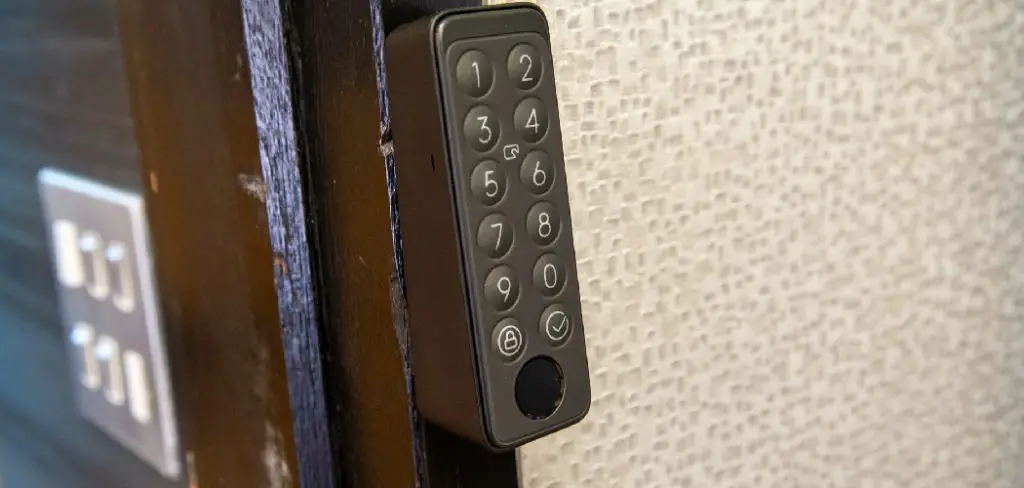
This article aims to guide you through changing the code across different types of door locks. Whether you are using an electronic keypad or a smart lock with app integration, understanding “how to change the door lock code” effectively will ensure your home remains secure and accessible only to those you trust. By staying informed, you can effortlessly adapt to any security needs or changes in occupancy.
Understanding Different Types of Door Locks with Codes
Electronic Keypad Locks
Electronic keypad locks are a popular choice for home security due to their ease of use and reliability. They allow users to enter a numeric code on a keypad to unlock the door, eliminating the need for traditional keys. This system is favored for its convenience and the enhanced security it offers, as codes can be changed easily to control access. Common brands like Schlage, Kwikset, and Yale offer models that feature backlit keypads, one-touch locking, and durable construction, making them a practical solution for residential and commercial properties.
Smart Locks with App Integration
Smart locks represent a modern evolution in security technology, offering the ability to control and monitor door access remotely through mobile apps. These locks sync seamlessly with smartphones, tablets, or smart home systems, providing users with keyless entry and the convenience of locking or unlocking doors from anywhere with internet access. The benefits of smart locks extend beyond convenience as they also allow for detailed access logs, temporary access codes for guests, and real-time notifications about entry events, making them a robust solution for enhancing home security tailored to the tech-savvy homeowner.
How to Change the Door Lock Code On an Electronic Keypad Lock
Finding the Program Code
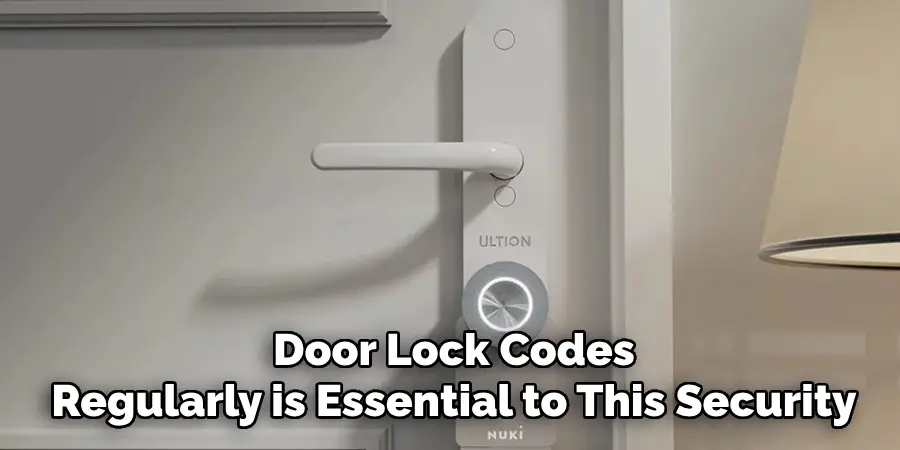
To change the code on an electronic keypad lock, you first need to locate the program code essential for altering the lock’s entry settings. This program code is often found in the lock’s manual or inscribed on the back. If you’ve misplaced this code, don’t worry; you can typically resolve the issue by contacting the lock’s manufacturer. They can provide guidance on resetting the code or, in some cases, issue a replacement program code to ensure you can change the lock’s entry code.
Step-by-Step Instructions for Changing the Code
Once you have the program code, follow these instructions to change the lock’s code successfully. Start by entering the program code on the keypad, which is required to authorize alterations. Next, press the specific button(s) associated with changing the user code. For instance, use the “Schlage” button on Schlage locks or the “Kwikset” button on Kwikset locks.
After pressing the necessary button, enter the new code you wish to use, ensuring it comprises a secure combination. Save the changes by following the manufacturer’s instructions, usually by pressing a particular button sequence. Finally, it’s crucial to test the new code multiple times to confirm it operates reliably, ensuring your premises remain secure with your selected access code.
Troubleshooting Common Issues
If the lock doesn’t accept the new code, check the battery levels, as low power can affect functionality. Additionally, ensure that the program code is accurately entered. If problems persist, re-enter the program code and go through the process again, paying close attention to each step to rectify any potential errors.
How to Change the Door Lock Code On a Smart Lock
Using the Mobile App to Change the Code
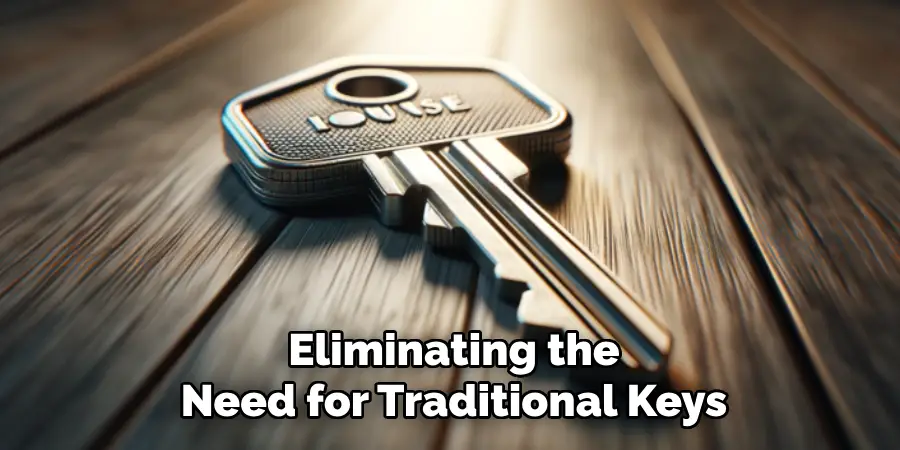
To change the code on a smart lock using a mobile app, start by ensuring your smartphone is connected to the internet and that you have downloaded the specific app for your smart lock, such as the August Home app for August Smart Locks. Launch the app and sign in to your account if prompted. Once logged in, navigate to the app’s settings or device management section, where you will find a list of devices connected.
Select the lock you intend to modify, and look for an option labeled “Change Code” or something similar. This feature is typically found in the lock settings or access management menu. Enter the new code you wish to use and ensure it is secure and memorable. After entering the new code, confirm your changes by following the app’s prompts, which may include verifying your identity through biometric authentication or a password. Finally, test the new code by locking and unlocking the smart lock from the app to ensure it has been applied successfully and functions properly.
Changing the Code via the Lock’s Keypad
You can directly change the code without using the app for smart locks equipped with a keypad, like the August Smart Lock or similar models. Begin by entering programming mode, which usually involves entering an existing code followed by a specific sequence of buttons, such as holding the “Schlage” button in Schlage smart locks or a similar method per the lock’s instructions.
Once in programming mode, follow the lock’s guidelines to delete the old code if necessary and enter the new code. Ensure the code chosen meets minimum and maximum digit requirements for security purposes. Confirm and save the new entry by pressing the appropriate button sequence, ensuring the lock acknowledges the changes. Test the new code several times directly on the keypad to verify successful reprogramming and ensure that access is granted consistently, keeping your security robust and reliable.
How to Change the Code on a Mechanical or Mechanical-Electronic Hybrid Lock
Manual Dial Combination Locks
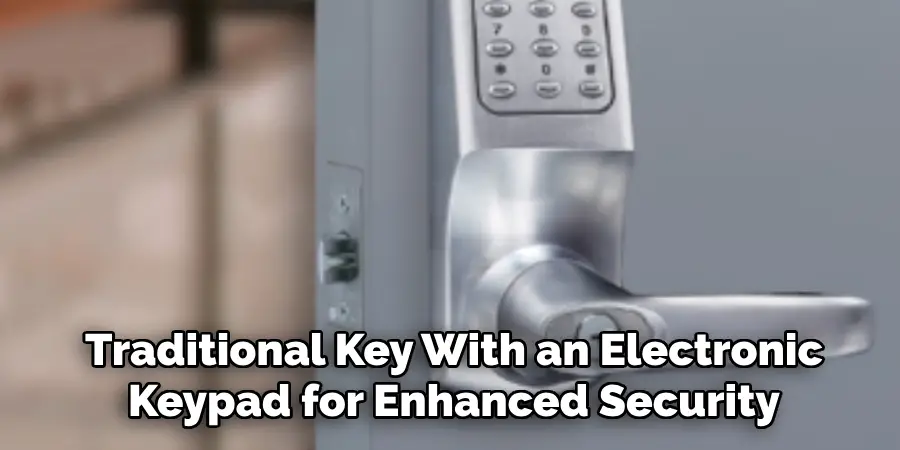
Manual dial combination locks, like those found on safes or older door locks, require precise unlocking turns. Changing the code involves a specific sequence based on the model. Typically, you’ll need to open the lock first with the current combination. Set the lock to its default position using a reset tool or following the manufacturer’s procedure. Turn the dial to set the new combination, often involving specific left-right-left turns to align numbers with a marking point on the lock. Ensure you record the new sequence for future reference and test it several times to guarantee reliable operation.
Hybrid Mechanical-Electronic Locks
Hybrid mechanical-electronic locks combine the use of a traditional key with an electronic keypad for enhanced security. To change the electronic code, first unlock the device using the key or existing code. Enter programming mode by following the lock’s instructions, commonly requiring a master code and the press of certain buttons. Once in programming mode, enter a command sequence to delete the old code and input the new one. Confirm the new code through the lock’s prompts while ensuring the mechanical key functionality remains unaffected. Testing both the key and new code will ensure compatibility and security continuity.
What to Do If You Forget the Door Lock Code
Common Causes of Forgotten Codes
Door lock codes are often forgotten due to various reasons such as infrequent use, frequent changes, or relying on multiple codes for different locks. This can result in difficulties gaining access, particularly in urgent situations.
Resetting the Lock to Factory Settings
If you forget the door lock code, resetting the lock to its factory settings can help you regain access. This process typically involves pressing and holding a reset button, which may be located on the back of the lock or under a panel. You might need to enter a specific key sequence for some models instead. All existing codes will be erased once the factory reset is complete, leaving the lock in its original state.
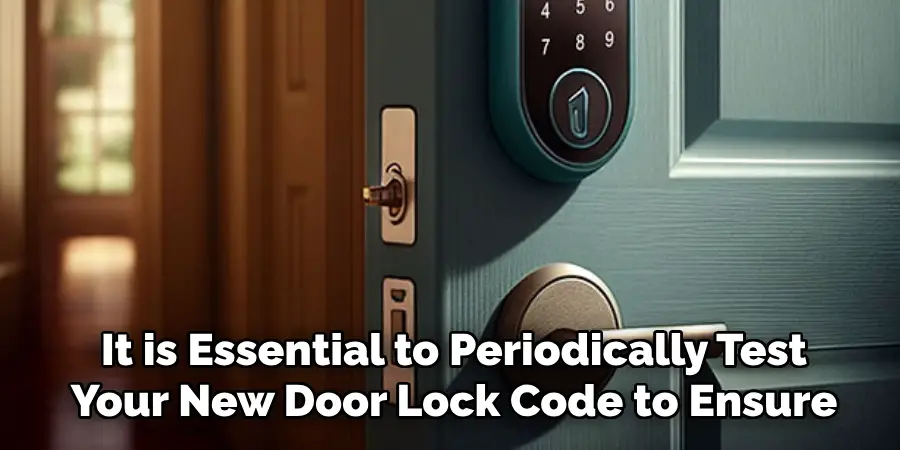
After a reset, it’s essential to reprogram the lock with new access codes. This process usually involves entering programming mode by using a default code provided by the manufacturer, followed by setting new user codes. Ensure the new codes are secure yet memorable, and document them carefully to prevent future issues. Testing the new codes thoroughly will confirm that the lock’s functionality is restored and ensure continued security for your property.
Security Considerations When Changing the Door Lock Code
Choosing a Strong Code
When changing your door lock code, it’s crucial to select a strong, secure combination. Avoid easy-to-guess codes like “1234” or “0000” that potential intruders can quickly bypass. Instead, use a mix of numbers and aim for a longer code, which adds complexity and confounds unwanted access attempts. A varied sequence helps ensure that the code is not easily deduced, providing enhanced security for your property.
Keeping Track of Codes
To manage and protect your lock codes, consider securely storing them using a reputable password manager or noting them down in a safe, secure location. It’s also vital to limit the number of people who know the code to only those who absolutely need access. Regularly updating your codes can prevent unauthorized access and ensure the continued security of your property, especially if the knowledge of the code changes hands or someone leaves your trusted circle.
Troubleshooting and Maintenance Tips
Regularly Testing the New Code
It is essential to periodically test your new door lock code to ensure it continues to function reliably. Regular testing helps identify any potential issues early on, allowing for quick resolution before problems escalate. If the code isn’t working or the lock malfunctions after a code change, first verify the entered code sequence is correct. Check for any physical obstructions or wear on the keypad that might affect functionality. Consult the lock’s manual or customer support for troubleshooting guidance if necessary.
Lock Maintenance
Proper lock maintenance is crucial for preventing problems when changing codes. Keep the keypad clean to ensure every press registers accurately, avoiding the build-up of dirt or debris that might affect performance. In electronic or smart models, regularly inspect your lock for signs of battery wear. Replacing batteries annually or when the lock shows signs of battery drain can prevent malfunctions, ensuring your lock remains dependable and secure.

Conclusion
Understanding how to change the door lock code is crucial to maintaining and enhancing your home security. Whether dealing with keypad, smart, or mechanical locks, the process involves following manufacturer-specific instructions and ensuring reliability through regular testing. Strong codes are essential to prevent unauthorized access, and proper lock maintenance, including keeping the keypad clean and batteries fresh, is vital.
By routinely updating and testing your lock codes, you can proactively ensure optimal safety for your property. These measures will provide peace of mind, knowing that your home remains well-protected.
